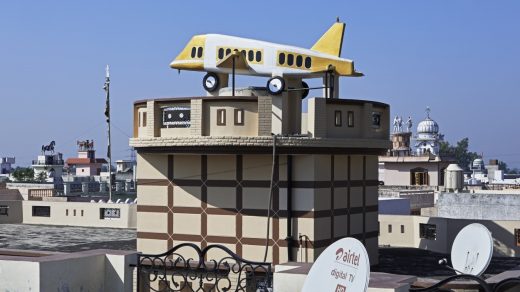The strange story of India’s wild water tank sculptures
By Sam Lubell
Rajesh Vora, an India-based photographer who has shot architecture for more than 20 years, has seen all kinds of building designs. But while on assignment about a decade ago in Doaba, a rural region of Punjab, he noticed something that took him by surprise: rooftop water tanks taking on shockingly weird shapes. Like really weird. We’re talking airplane propped on top of checkered cube weird. Soccer ball levitating on a polka dotted golf tee or spiral stair topped with a giant beach umbrella weird. Giant golden kangaroo with boxing gloves weird. You get the idea.
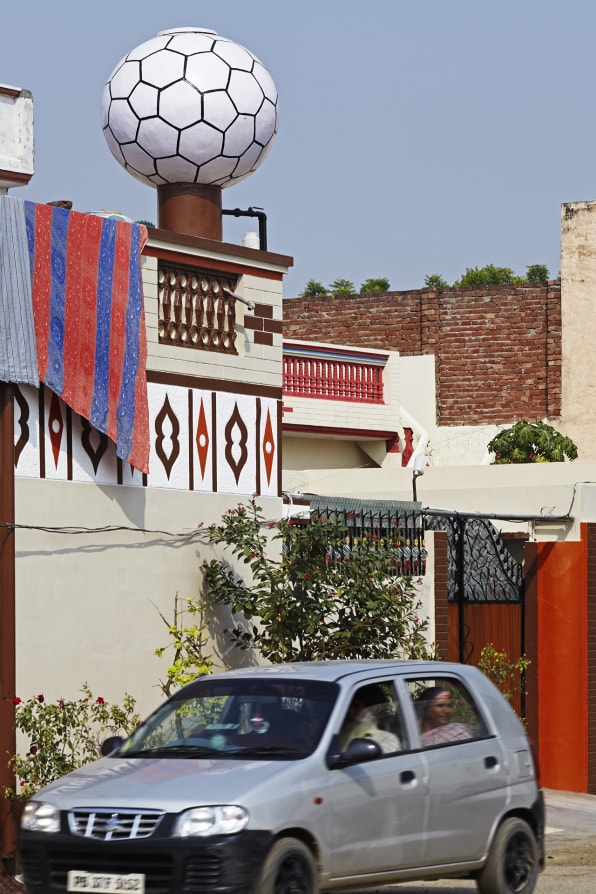
After doing some digging, Vora discovered that these strange water tanks have been part of the region since the 1970s, despite being virtually unknown outside of Punjab. They are part of a local art form that he calls “showpiece” water tanks, which rise atop new homes that are often equally ornate and unusual. He spent the following five years visiting about 150 villages around the region documenting the oddities. Last year he shared them in an exhibition at Vancouver’s Surrey Art Gallery, and he has just published them in a new book, Rajesh Vora: Everyday Monuments – The Rooftop Sculptures of Punjab (Figure 1 Publishing).
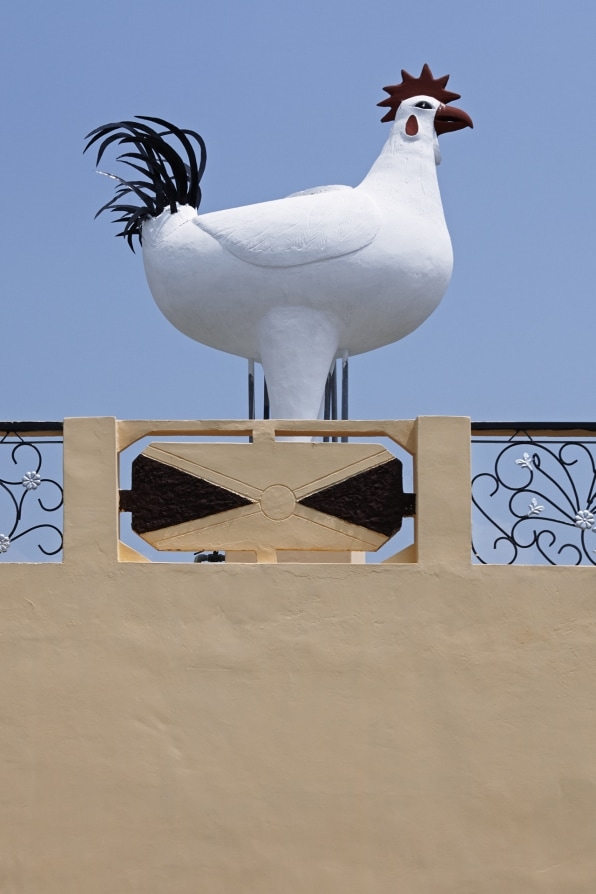
Dozens of towers fill the book’s pages, and they rarely disappoint. Who doesn’t love a pint sized Eiffel Tower, a demonic-looking Statue of Liberty, or a behemoth chicken? Vora says that when he first saw the practical sculptures, he would laugh. But as he got to know them, and their owners, he realized that there was something deeper there. The structures, he would learn, serve many roles: they tell important family stories, act as status symbols, and serve religious purposes, to name just a few functions.
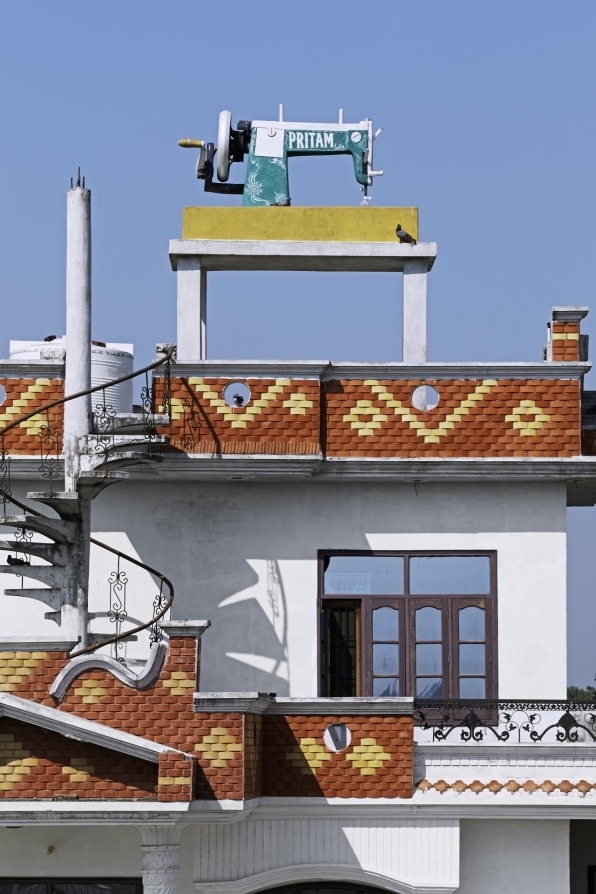
An airplane, for instance, could tell the tale of a family member’s migration to another country (the region has a very high rate of migration), while a military plane probably represents that someone in the family has served in the military. That kangaroo could represent a connection to Australia (and a family member who is a boxer?), a sewing machine could symbolize involvement in garment making, and different birds take on varying symbolism in Sikhism, including power, courage, love, goodness, treachery, and mourning. As for the golf ball, your guess is as good as Vora’s. His personal favorite is a giant pressure cooker, which he assumes means the family is involved in the culinary world.
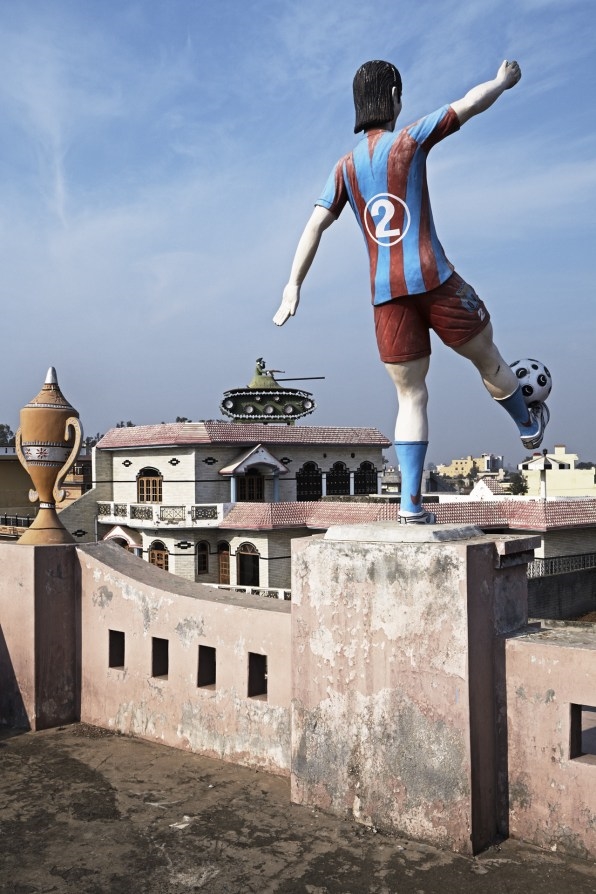
Vora always photographed the towers from eye-level perspective, giving them equal prominence. This meant he had to find his way to the rooftops of nearby buildings. It also meant talking to more people and learning about what made them tick. He discovered, among other things, that local artisans and builders had formed a cottage industry out of the towers. Some are quite sought after, with thriving workshops filled with statues.
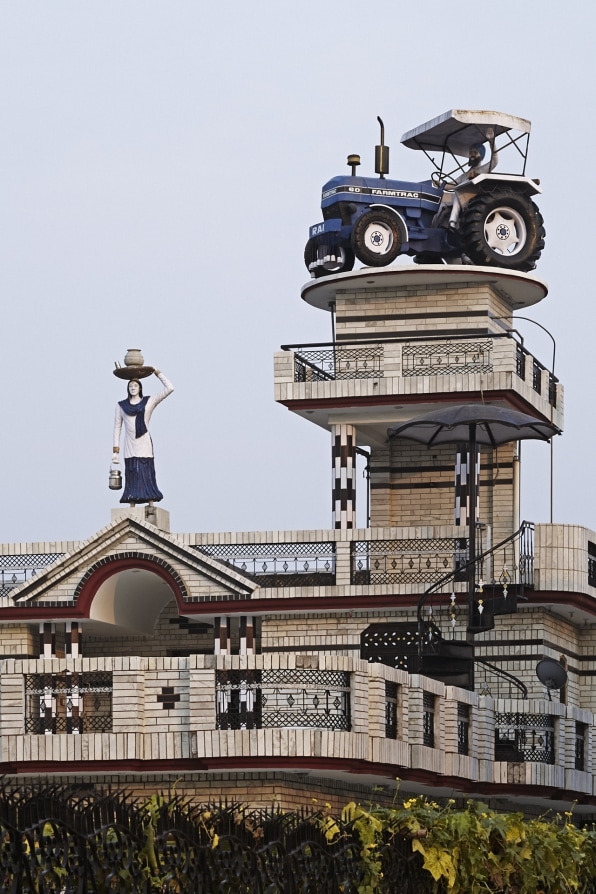
Indian architect Rahul Mehrotra, who writes one of the book’s essays, hypothesizes that the towers, and their “kitsch modernism,” could be a rejection of the pure, self- serious uniformity imposed by buildings like Punjab’s most famous modern monument: Le Corbusier’s capitol complex, Chandigarh. And Keith Wallace, curator of the exhibition at Surrey Gallery (which has the same name as the book) loosely compares Vora’s work to that of famed German photographers Hilla and Bernd Becher, who brought to life aging water towers as “anonymous sculptures.”
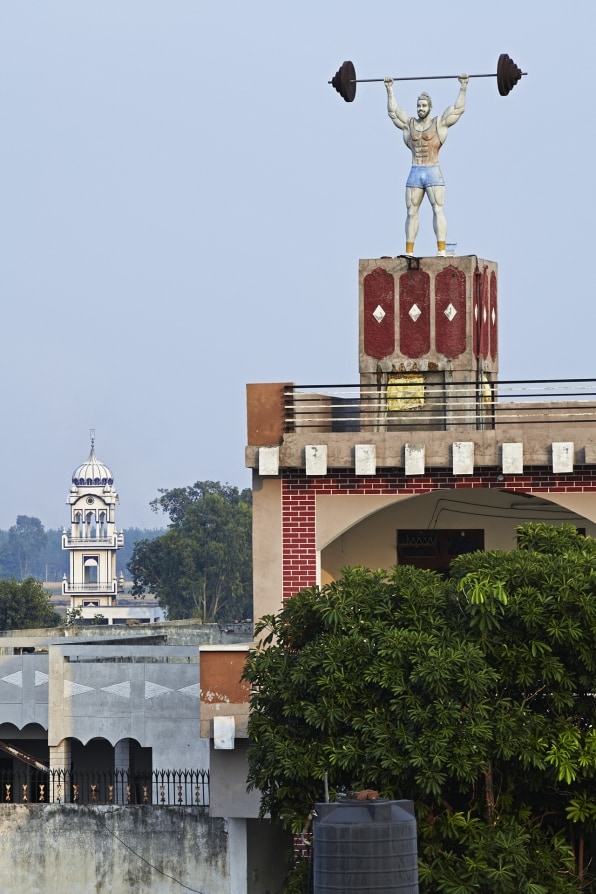
For Vora, it’s mostly about personal expression. He finds that people in the region (and in Punjab in general) do everything loudly, and truly enjoy friendly one-upmanship, even if that’s just who can think of the most original tower. “They sing loudly, they dress loudly, their sense of celebration is very loud,” he says. “They enjoy life. They live it to the fullest. It’s a celebration for them.”
(23)

